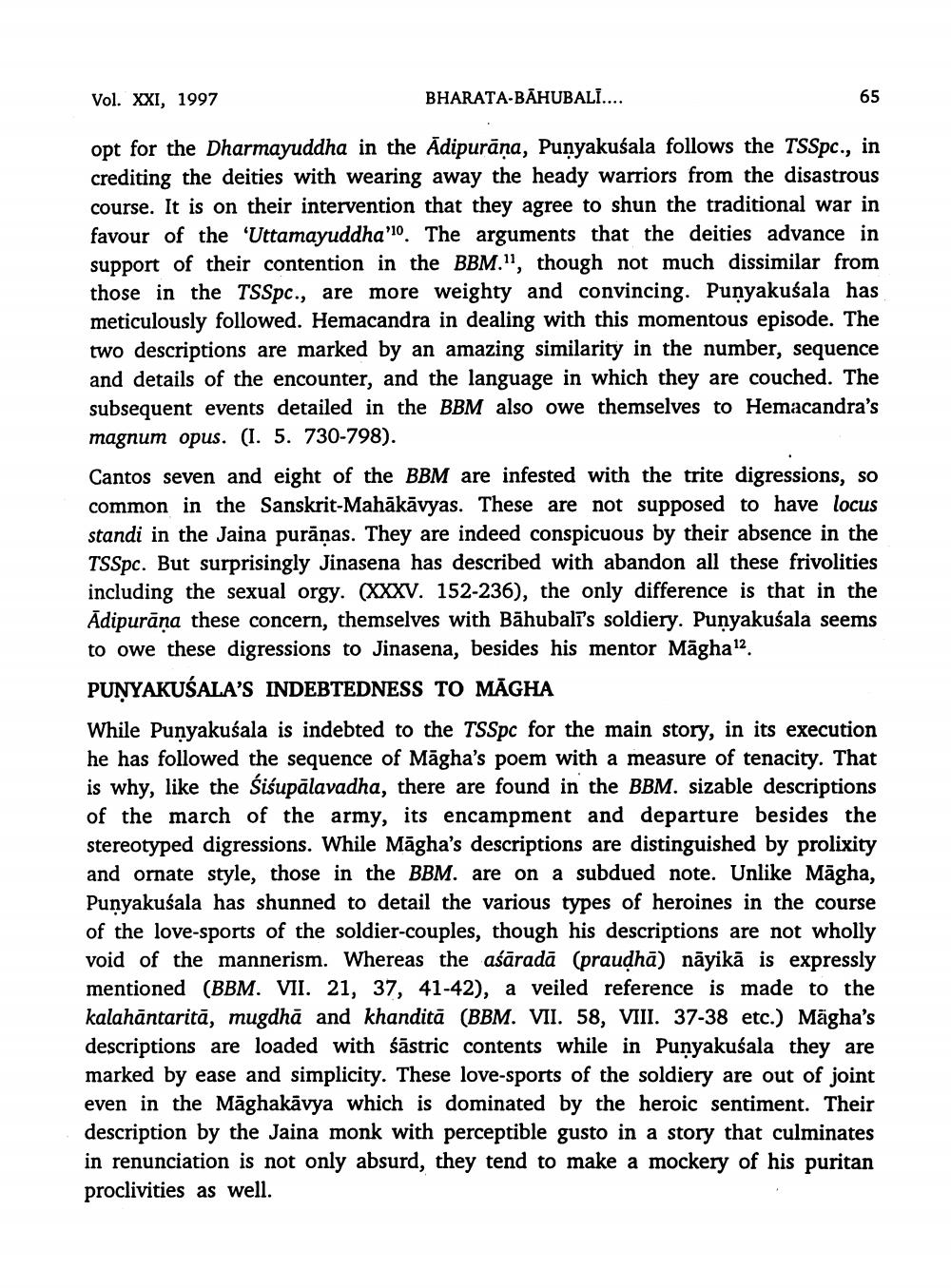________________
Vol. XXI, 1997
BHARATA-BAHUBALI....
opt for the Dharmayuddha in the Adipurāna, Punyakusala follows the TSSpc., in crediting the deities with wearing away the heady warriors from the disastrous course. It is on their intervention that they agree to shun the traditional war in favour of the 'Uttamayuddha'10. The arguments that the deities advance in support of their contention in the BBM.", though not much dissimilar from those in the TSSpc., are more weighty and convincing. Punyakusala has meticulously followed. Hemacandra in dealing with this momentous episode. The two descriptions are marked by an amazing similarity in the number, sequence and details of the encounter, and the language in which they are couched. The subsequent events detailed in the BBM also owe themselves to Hemacandra's magnum opus. (I. 5. 730-798). Cantos seven and eight of the BBM are infested with the trite digressions, so common in the Sanskrit-Mahākāvyas. These are not supposed to have locus standi in the Jaina purāņas. They are indeed conspicuous by their absence in the TSSpc. But surprisingly Jinasena has described with abandon all these frivolities including the sexual orgy. (XXXV. 152-236), the only difference is that in the Adipurāna these concern, themselves with Bahubali's soldiery. Punyakusala seems to owe these digressions to Jinasena, besides his mentor Māgha 12. PUŅYAKUŚALA'S INDEBTEDNESS TO MĀGHA
While Punyakušala is indebted to the TSSpc for the main story, in its execution he has followed the sequence of Māgha's poem with a measure of tenacity. That is why, like the sisupälavadha, there are found in the BBM. sizable descriptions of the march of the army, its encampment and departure besides the stereotyped digressions. While Māgha's descriptions are distinguished by prolixity and ornate style, those in the BBM. are on a subdued note. Unlike Māgha, Punyakusala has shunned to detail the various types of heroines in the course of the love-sports of the soldier-couples, though his descriptions are not wholly void of the mannerism. Whereas the aśāradā (praudhā) nāyikā is expressly mentioned (BBM. VII. 21, 37, 41-42), a veiled reference is made to the kalahāntaritā, mugdhā and khandită (BBM. VII. 58, VIII. 37-38 etc.) Mägha's descriptions are loaded with śāstric contents while in Punyakusala they are marked by ease and simplicity. These love-sports of the soldiery are out of joint even in the Māghakāvya which is dominated by the heroic sentiment. Their description by the Jaina monk with perceptible gusto in a story that culminates in renunciation is not only absurd, they tend to make a mockery of his puritan proclivities as well.




